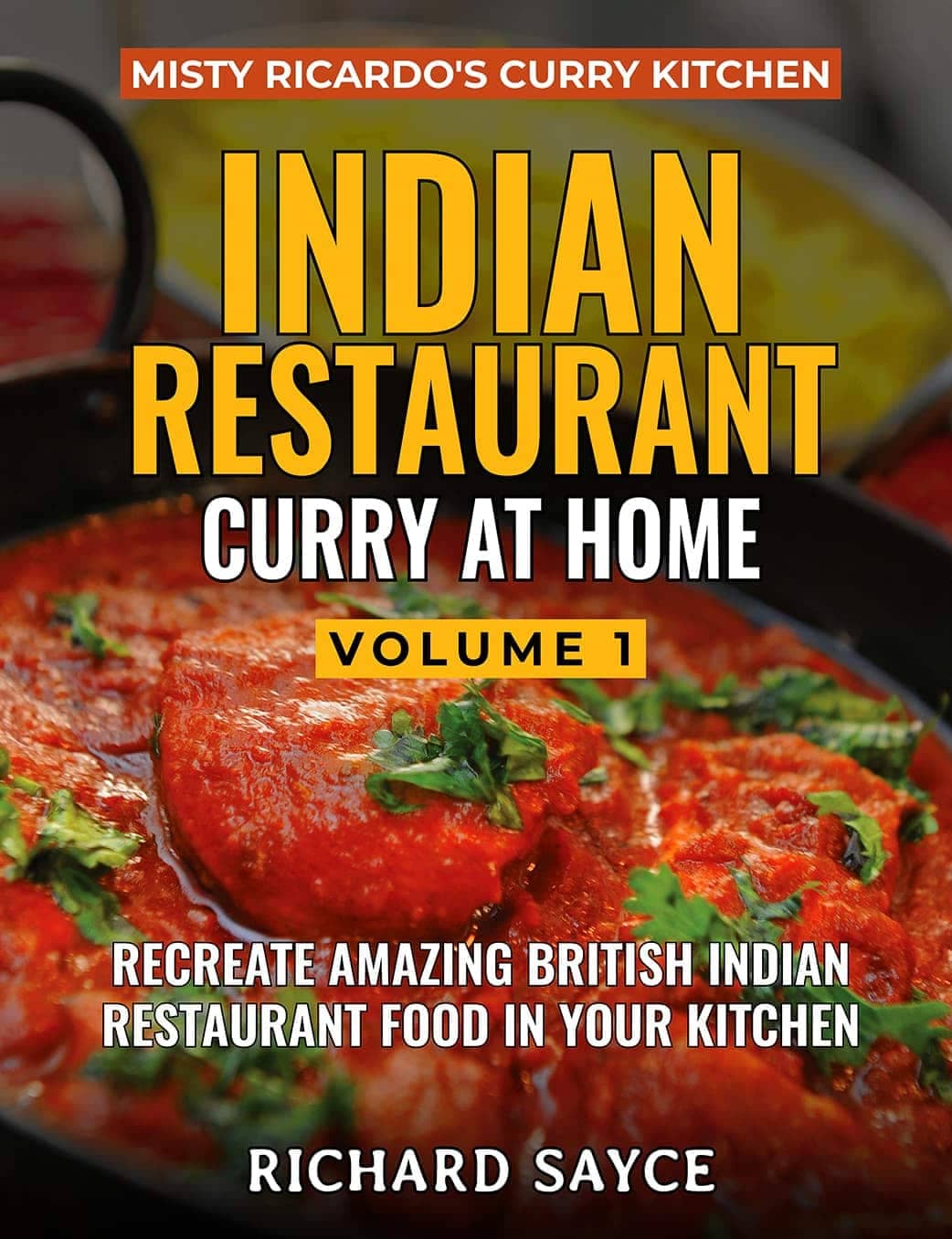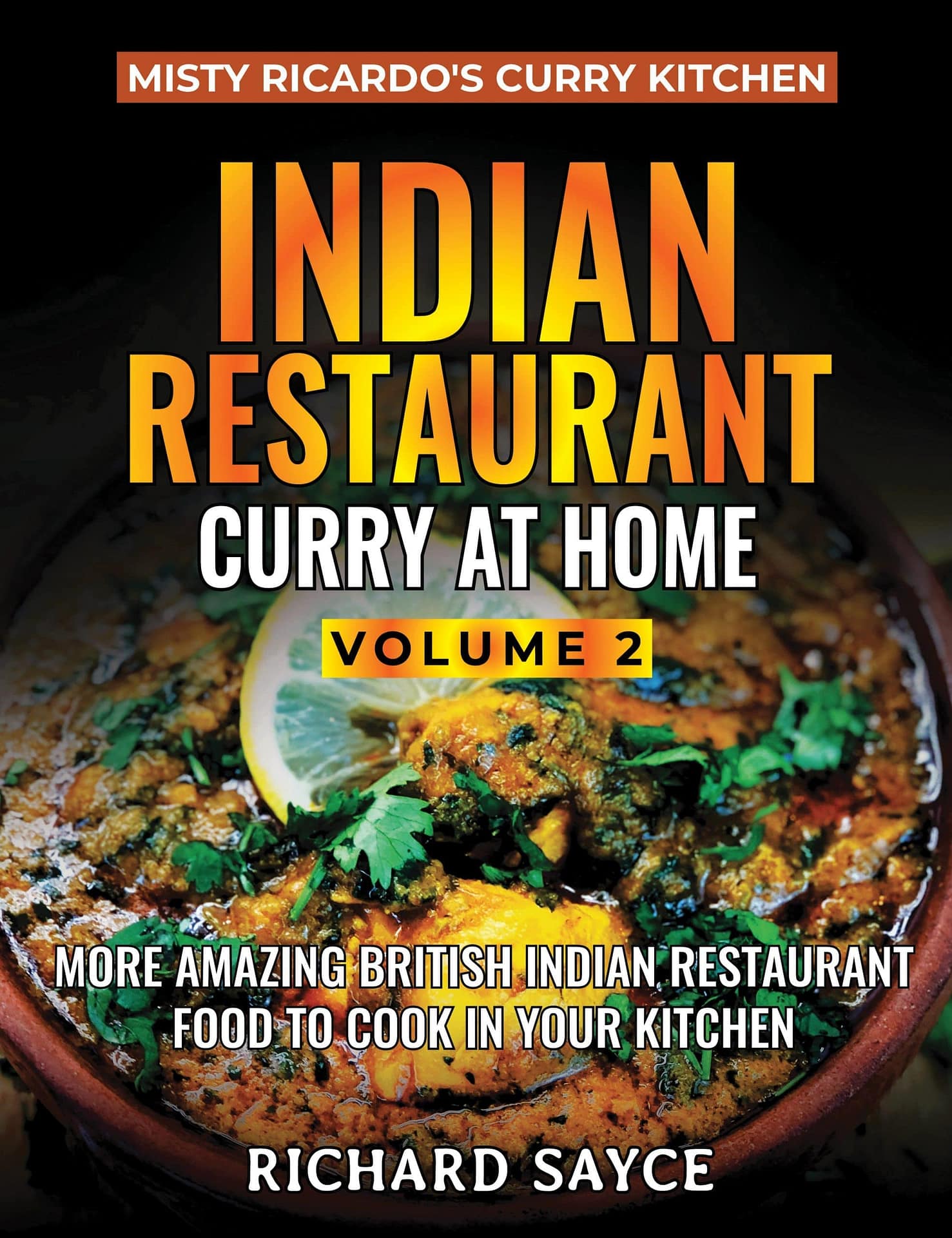Shorshe Masala Curry Recipe:
This is an unusual curry born out of my experiment using leftovers one day.
I tried out the combination of English mustard, cream, and honey, and the outcome was this recipe, which is a medium-hot curry with the punchy piquancy of mustard and Bengali spices balanced harmoniously by honey and a little vinegar. Cream is added to create a smooth rounded flavour through which all the flavours can surface.
I gave this dish its name from the word ‘shorshe’, the Bengali word for mustard.
Use any main ingredient you like – any form of protein works well in it. The recipe is from my most recent cookbook Curry Compendium and also in my second book Indian Restaurant Curry at Home Volume 2.
INGREDIENTS
- 3 TBSP Oil (45ml). Optionally use up to 1 TBSP of Mustard Oil as part of the total for extra tang
- 1 tsp Panch Phoran (Bengali 5 spice seed mix)
- 2 Cloves
- ½ tsp Coriander Powder (toasted and freshly ground is best)
- ¼ tsp Black Pepper Powder (toasted and freshly ground is best)
- 1 tsp Mix Powder
- ¼ tsp Salt
- ½ tsp Chilli Powder (optional)
- 4 TBSP Special Mustard Paste (see below)
- Pre-cooked Chicken, Pre-Cooked Lamb, Prawns, Vegetables, etc.
- 330ml+ Base Gravy, heated up
- 1½-2 tsp Honey. Jaggery or Brown Sugar can be substituted
- 40ml Single Cream
- Fresh Coriander to garnish
Special Mustard Paste
This makes a bit more than the amount needed (4 TBSP) for this recipe. All the following ingredients are chopped and blended to a paste:
- 2-3 tsp Yellow Mustard Powder or 2-3 tsp ready-made English or Dijon Mustard from a jar
- 1 tsp Kasuri Methi
- ½ tsp Turmeric
- 40g Onion
- 1 TBSP fresh Coriander Stalks
- 2-3 Cloves Garlic
- 2-3 tsp Vinegar (e.g. cider, white wine, malt). If using ready-made mustard, reduce this quantity to 1 tsp as it will most likely contain vinegar already
- 1½ cm chunk of fresh Ginger
- ½ tsp Elachi Powder (cardamom seed powder), or the whole seeds from within the pods (Optional)
- 2-3 Green Chillis (optional)
- 2 TBSP Water (to help blend)
Watch the Video
METHOD
- Firstly, toast and grind the coriander seeds and black peppercorns to a powder, and then make the special mustard paste (see above).
- Add the oil to a frying pan or korai on medium high heat.
- When hot, add the panch phoran and cloves. Stir until the black mustard seeds within the seed mixture start to pop.
- Add the coriander and black pepper powders, mix powder, salt, and the optional chilli powder.
- Fry for 20-30 seconds, stirring diligently. Add a small amount of base gravy (e.g. 30ml) to help the spices fry without burning.
- Turn the heat up to high and add 4 TBSP of the special mustard paste prepared earlier. Stir and leave to fry for 20-30 seconds.
- Add the pre-cooked chicken, pre-cooked lamb, vegetables, etc., and mix well into the sauce.
- Now add the first 75ml of base gravy, stir into the sauce, and leave on high heat (not stirring) until the sauce is reduced a bit and tiny craters form near the edges of the pan.
SPACEHOLDER
- Add a second 75ml of base gravy, stirring and scraping the bottom and sides of the pan once when first added, allowing the sauce to reduce once again.
- Now, add 150ml of base gravy and the honey or sugar. Stir and scrape once when first added.
Leave to cook on high heat for 5-6 minutes, or until the desired consistency is reached (medium thickness). Add a bit more base gravy if desired to thin the sauce out. Allow the sauce to stick and thicken on the bottom and sides of the pan – avoid stirring unless you think it might burn. - A couple of minutes before the end of cooking, turn the heat down to low temporarily and stir in the single cream. Taste, and add extra salt, mustard and/or honey/sugar if desired.
- Locate and remove the two cloves. They should be easy to spot as the curry is quite light in colour.
- If you are calorie-conscious spoon off excess oil from the top of the curry.
- Serve, sprinkling fresh coriander on top.
NOTES
- Varieties of ready-made mustard differ greatly in strength. Go easy on how much you add to the paste. You can always compensate with extra later when tasting.
- There are two slight adaptations from the corresponding YouTube video recipe – the option of using some mustard oil, base gravy increased from 280ml to 330ml+, and the amount of mustard powder decreased from 1¼ TBSP to 2-3 tsp.
- All spoon measurements are level, i.e. 1 tsp=5 ml, 1 TBSP=15ml.
2 Comments
Submit a Comment
You must be logged in to post a comment.






I finally got round to cooking this. At the beginning of Lockdown back in March I started a weekly delivery of curry to my aged mum and the in-laws, and have been working my way through books 1 and 2 missing out only those curries that I didn’t think they’d like – the vindaloo, phal, lavastorm and naga curries got a miss – I don’t want to give them a heart attack after investing so much time and effort into keeping them alive. Anyway, this Shorshe Masala was one of those recipies I shied away from, just because I had misgivings about how nice it would be. All that mustard! Would it really produce something nice?
Well I should have known shouldn’t I? There’s not one single dud recipe in the entirety of these 2 books. This is a lovely dish – and I can’t say I’ve seen or tasted anything that’s really like it. The tang of the mustard is there, but it’s not overpowering, and that feeling like you’re going to lose the lining of your nose that you get if you taste mustard straight out of the jar, subsides to a gentle warming heat on cooking, complementing the more ‘up front’ heat of the chillies.
Glad you enjoyed the Shorshe Masala. Thank you 🙂